A handmade electric guitar maker from Fukuoka, Japan. 2021 is a new brand.
Takeshi Katada (Luthier)
He left his parents’ home in Oita Prefecture at the age of 17 with nothing to join Shinichi Chiba’s office to become an action star. I bought only an admission ticket and took a regular train to finally get to Shinjuku. When I lost my ticket and lied that I took the train from Shibuya, the station attendant said, “There are people like that who come from faraway places,” and gave me a ticket from Shibuya. The kind station attendant helped me even though he had already seen through me. Not knowing where Shinichi Chiba’s office was located, he quickly gave up on being an action star and started a live-in job at a bakery. Then he went to Ochanomizu to buy a guitar to become a rock musician. There, he is shocked to find guitar parts for sale and learns that “you can make your own guitar. The next day, he went to the post office with what little money he had, bought some parts, and started making guitars. He learned how to make a guitar before learning guitar chords.
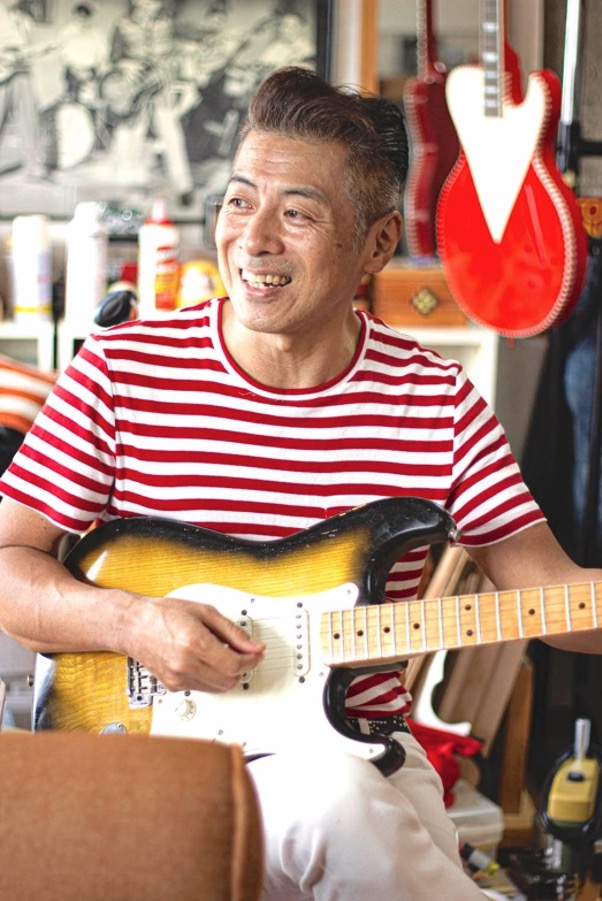
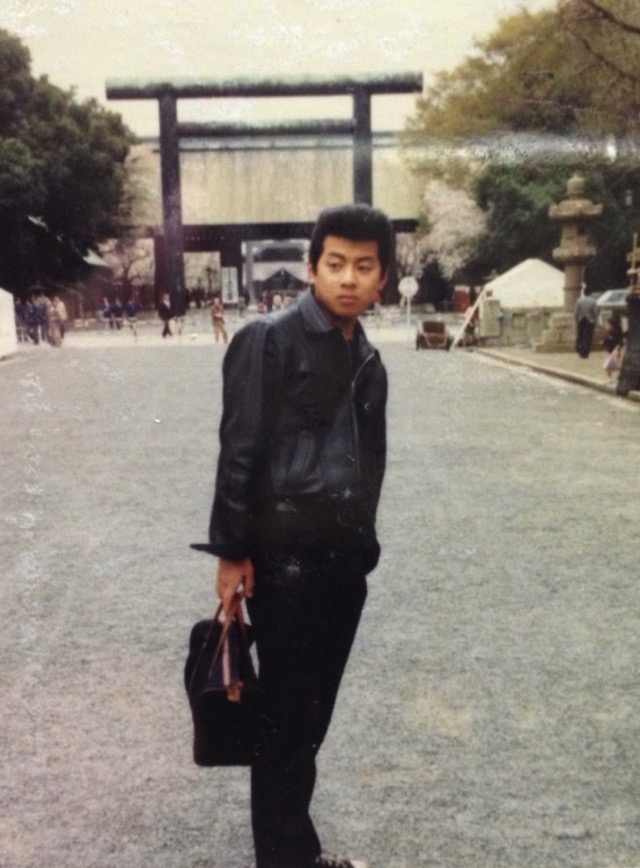
(Photo taken when he was 17 years old in Tokyo)
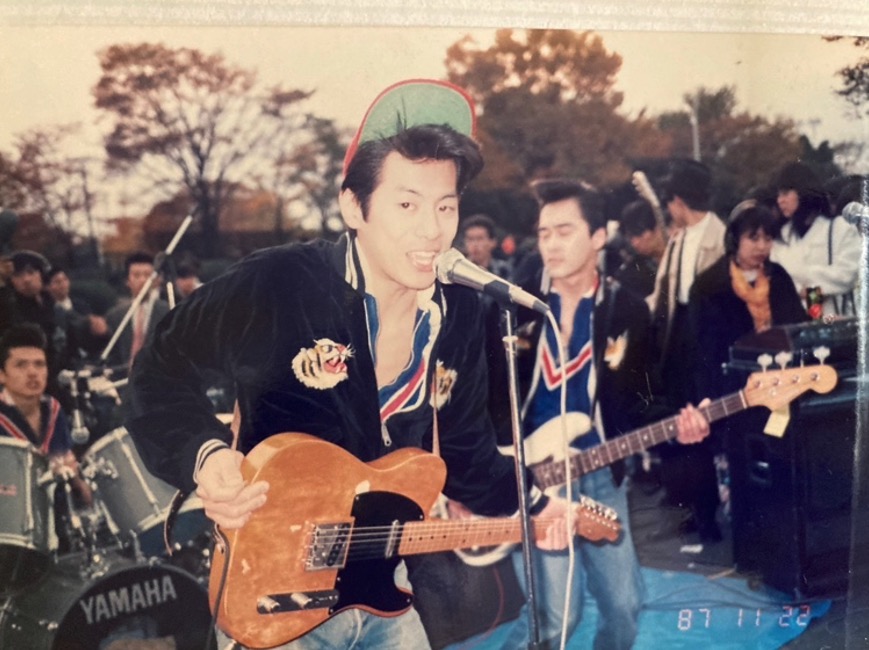
He began his life working part-time, mainly in restaurants.
He formed a band and made his debut at the age of 23, but the band broke up because it didn’t sell any records.
In his 30s, he started working part-time, mainly in restaurants, and worked at a ramen restaurant in Koenji, Tokyo. The ramen was made with soy sauce, but it also had a secret ingredient of French bouillon, and the thick slices of pork were tender. It was a delicious ramen with many pickled bamboo shoots, wakame seaweed, and spring onions. That’s where I met TOMO (later the CEO) as a customer. TOMO loved the ramen that Katada made. That’s where their story began.
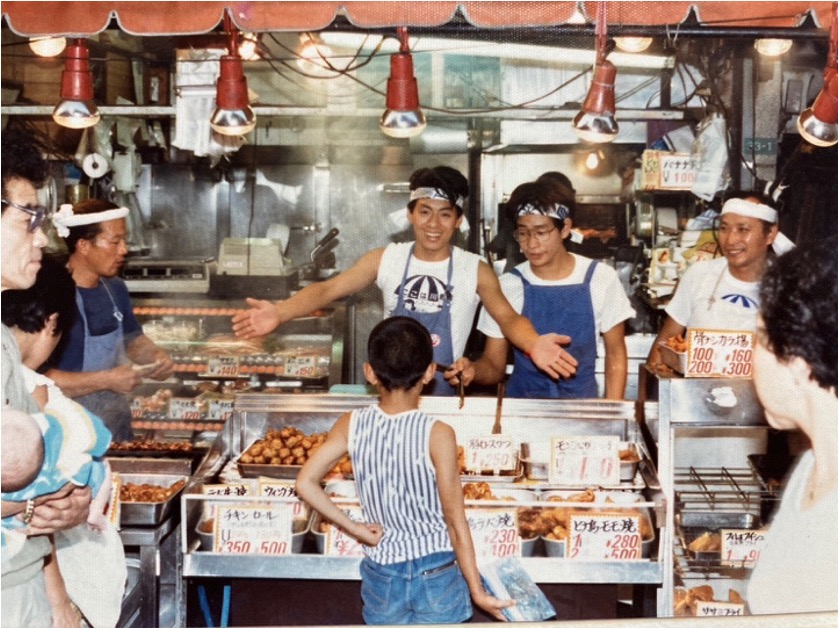
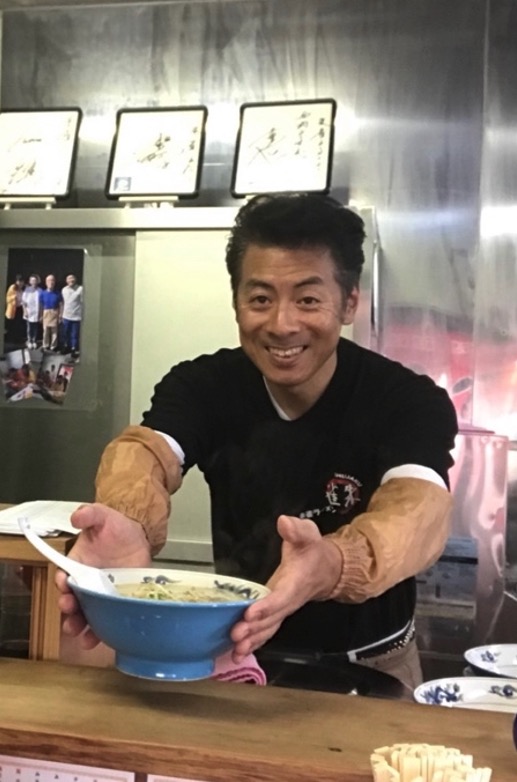
Katada moving from one part-time job to another.
He married a woman he met on a dating website, which was not widespread then, but they divorced after two years. He quit his job at the ramen restaurant and started a bar.
When Tomo visited the bar, he noticed a guitar (the same design as the current CGK) on the wall. When he discovered that Katada had made it himself, he asked him to sell it to him, but he refused, saying that he only made it as a hobby and didn’t sell it to other people.
In 2011, the Tohoku earthquake and tsunami occurred. Because his parents in Oita were not well, he decided to close the bar and return to Fukuoka.
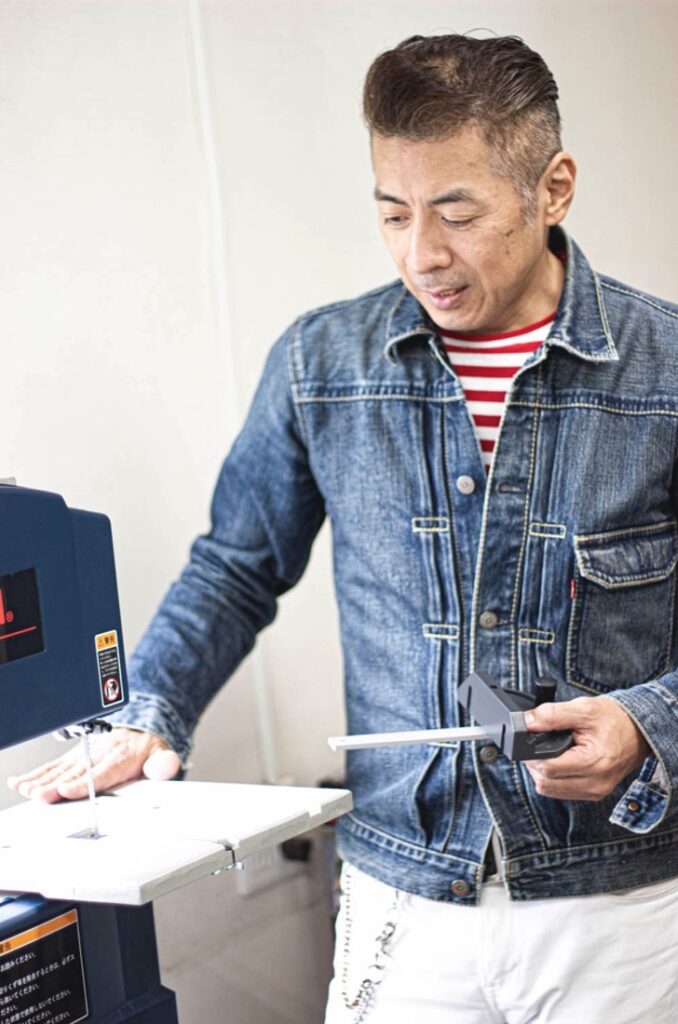
When he returned to his hometown after turning 50 and reexamined his life, he felt a growing desire to do something he loved. When he was 55, he met Tomo again, who had come to Fukuoka on business. When he learned Katada was still making guitars, he sold them together.
By finding a partner, he was able to launch this brand.
“When I hold a guitar I’ve made, it makes me feel really good. I want everyone to play something that makes them feel good, too,” says Katada. Customers often say to him, ‘You can really feel the craftsmanship in this guitar.’ A guitar with perfect specs and parts is dull. A guitar that oozes the personality and attention to detail of the maker. That’s CGK.
Finding a partner allowed us to launch this brand.
He is not a bloodthirsty person and is well-liked by people because of his calm nature, but he is often deceived because of it. He is good at immersing himself in what he loves. Why does he like making guitars? When asked, “When I hold a guitar I made, it makes me feel goofy. I want everyone to play something that makes them feel good, too. But that’s what makes a guitar unique to Katada, and he is often told by players that they can “feel the luthier’s attention to detail. A textbook guitar with perfect specs and parts is boring. A guitar that oozes the luthier’s character and commitment. That is CGK.
However, they are short of money. TOMO borrowed money from the bank to cover most of the material costs and is now barely scraping by on a bicycle. Sales have gradually expanded, but there are concerns that the domestic market alone will reach its ceiling, so the company has begun to look overseas to expand its sales channels.
Here is a summary of the materials I sent last time, mixed up.
Features of Checkered Stitching.
The one and only “selling point” of
CGK is the checkerboard stitch.
The method of making it is a secret and not publicized, but we will tell you about it as an appeal to foreign countries.
First, paint the “edge” gold.

Paint “white” over it.
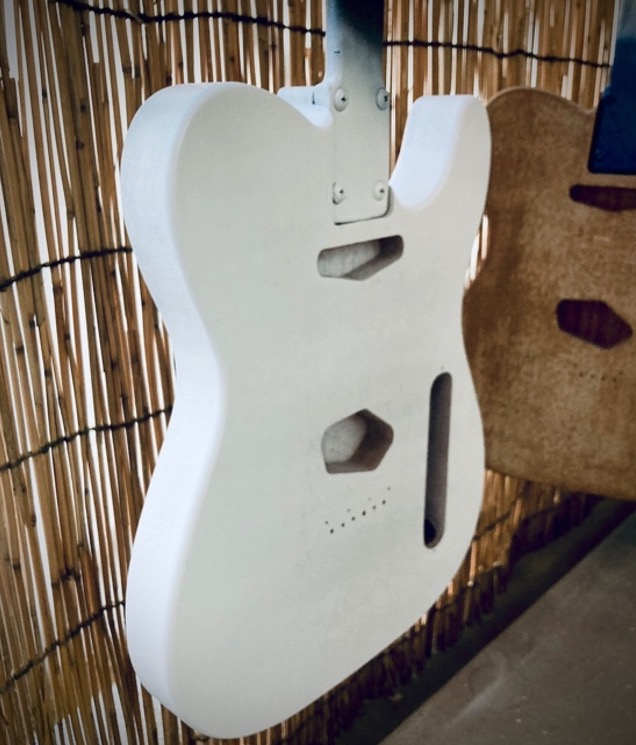
Hand-apply masking tape one by one.
Then remove the masking tapes one by one.
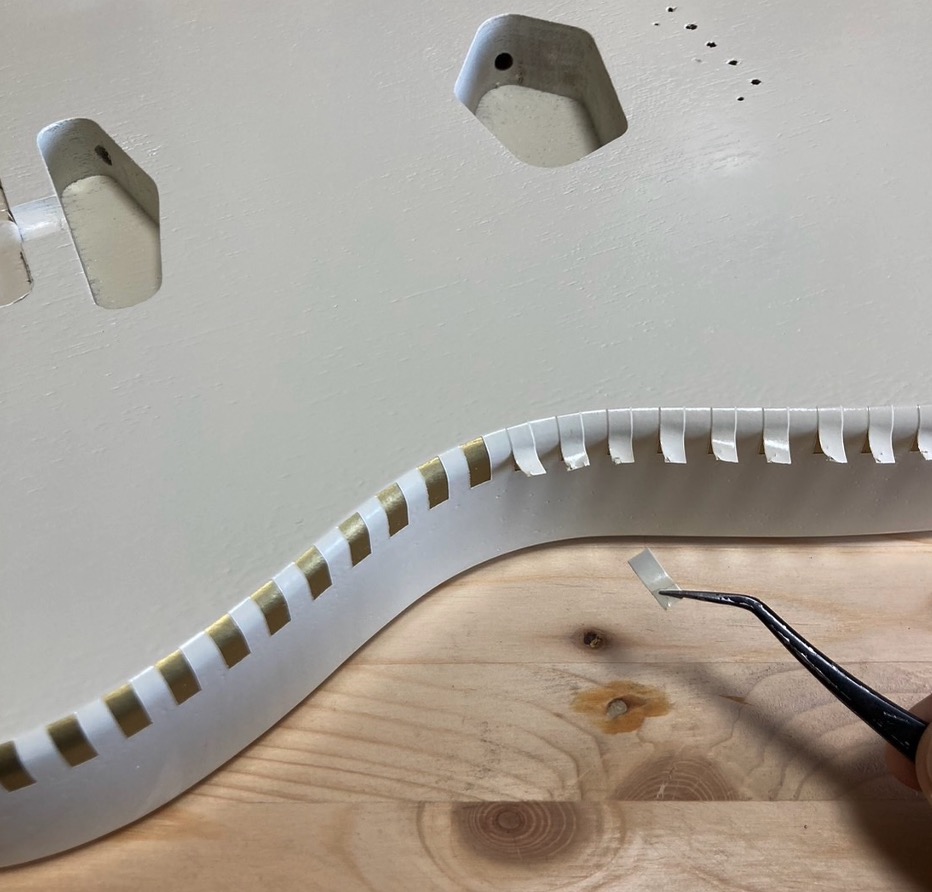
Then you can see the underlying gold. Completed!
Looks oriented.
First of all, the design and paint job are eye-catching, and since I love cars, fashion and music (ROCK/BLUES/JAZZ/POP) of the 50s and 60s, I incorporated the two-tone colors (or bi-color in English) of cars and clothes that evoke their playfulness and elegance in the design. I incorporated the two-tone colors of cars and clothes (or bi-color in English?) into the design. The edge of the body has a checkered pattern (checker stitch), which is luthier’s own secret way of painting. It takes a lot of time and effort to apply the masking tape one by one by hand. This is also applied to the edges in the image of hand stitching on clothes. And the V-line pickguard. This is also an original design, with the V reminiscent of Cadillac and Chevrolet emblems. Its form has been registered as a design. (Certificate of design registration Registration number:1649706)
The most time-consuming and labor-intensive coating is nitrocellulose paint, which was used on many guitars from the 50s and 60s, and although it scratches and peels easily, the scratches become part of the guitar’s character. When I bring this guitar, people always ask, “What’s that guitar? Whenever I bring this guitar, I am always asked “What’s that guitar?
Not only do they look good, but they also feel and sound great.
Luthier Katada wants to create “something that makes you feel good when you hold the guitar. The neck is finished with a 2mm thinner shape for an easy grip. Also, the parts are made in Japan and made by GOTOH, which is highly reliable. For pickups, GOTOH PICKUPS, which has been consistently producing replacement pickups in Japan, and SEYMOUR DUNCAN, which has an established reputation worldwide, are used. I have owned many Gretsch guitars, including vintage ones. I have also always loved the sound and design of Gretsch guitars, and have owned many Gretsch guitars, including vintage ones. When I asked my customers to play the guitar at exhibitions, they all said, “I thought it looked like this, so I didn’t expect it. I was surprised at how easy it is to play and how good the sound is.” Many people who had no expectations from the looks of the guitar are surprised at how good it sounds. The guitar we are sending this time is a V2 Paprika Red with TVJONES SuperTron (hum) on the front and SEYMOUR DUNCAN (single bridge).
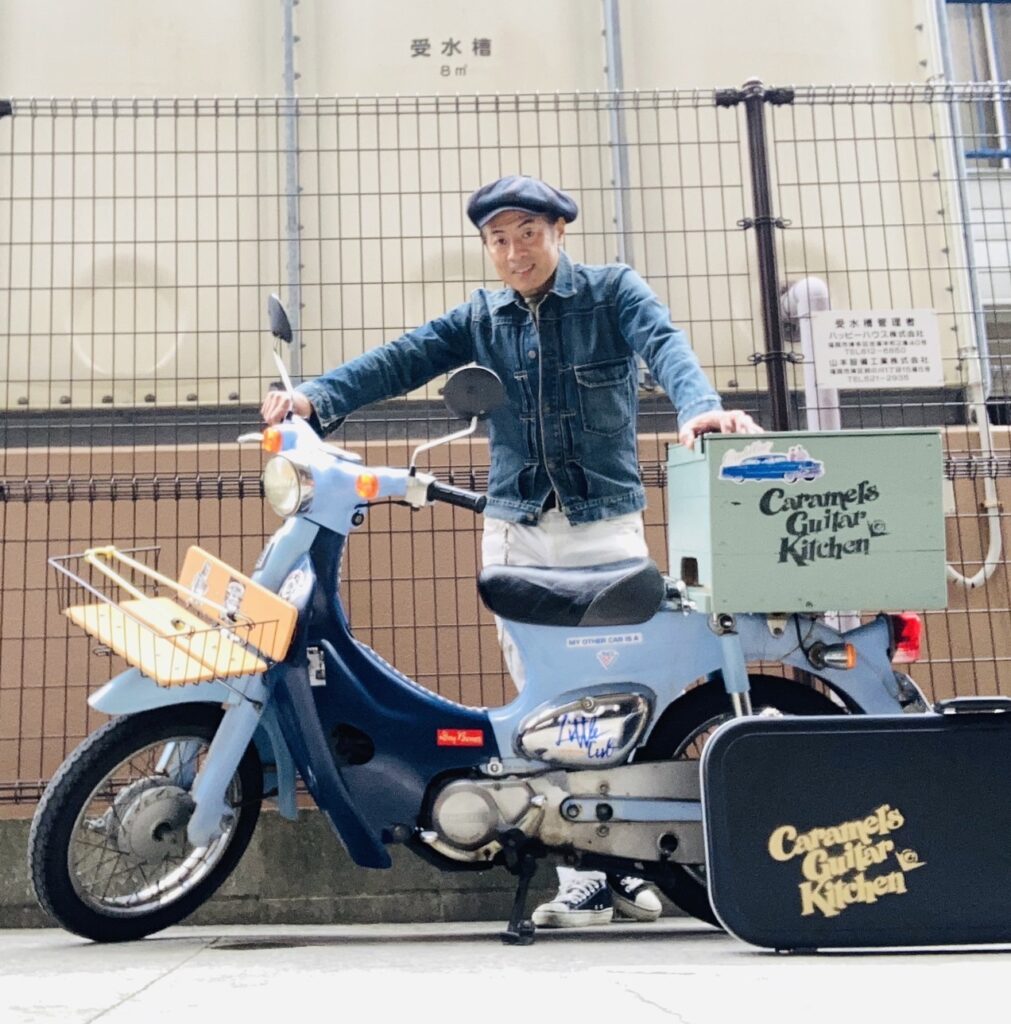
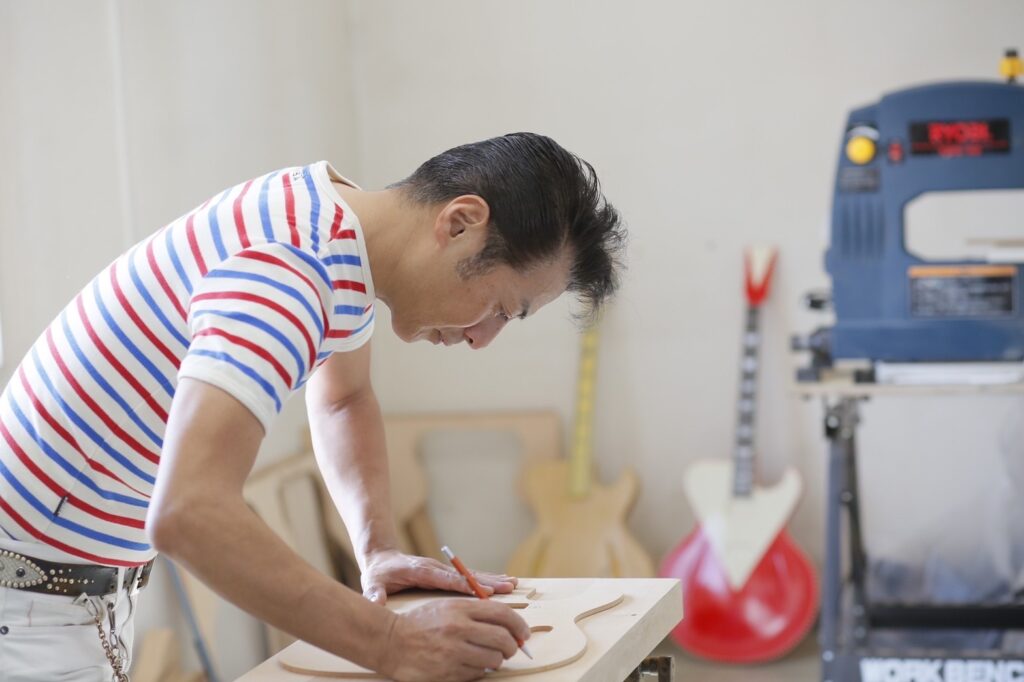
Origin of the name
The name “Caramel” was taken from the name of the band that luthier Katada was in, and the kitchen was named after Katada’s long career in the restaurant business. Just as he makes each dish delicious, he carefully and painstakingly crafts each guitar with the customer’s face in mind. That is why the name of the model is also named after “food.